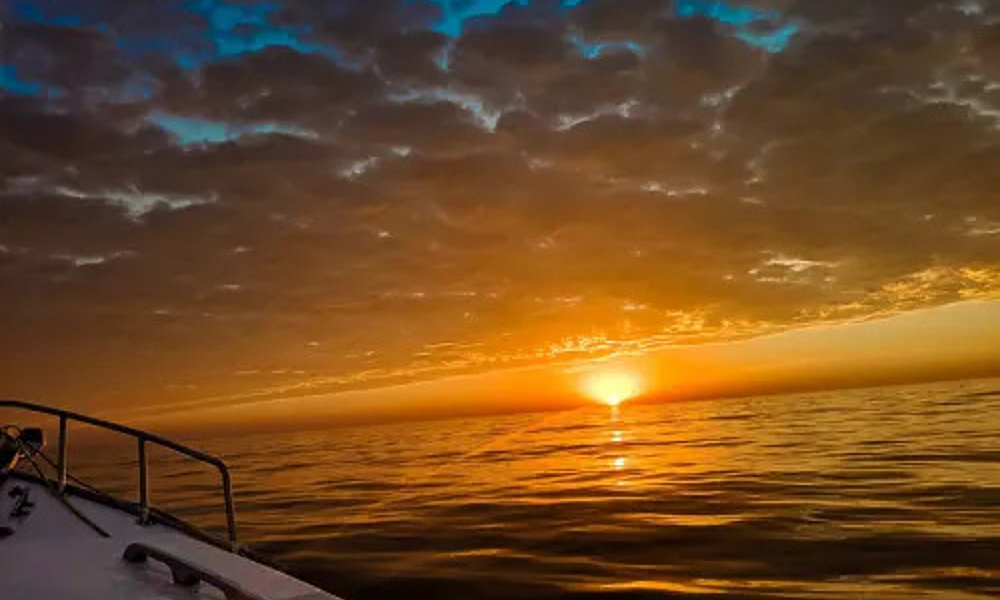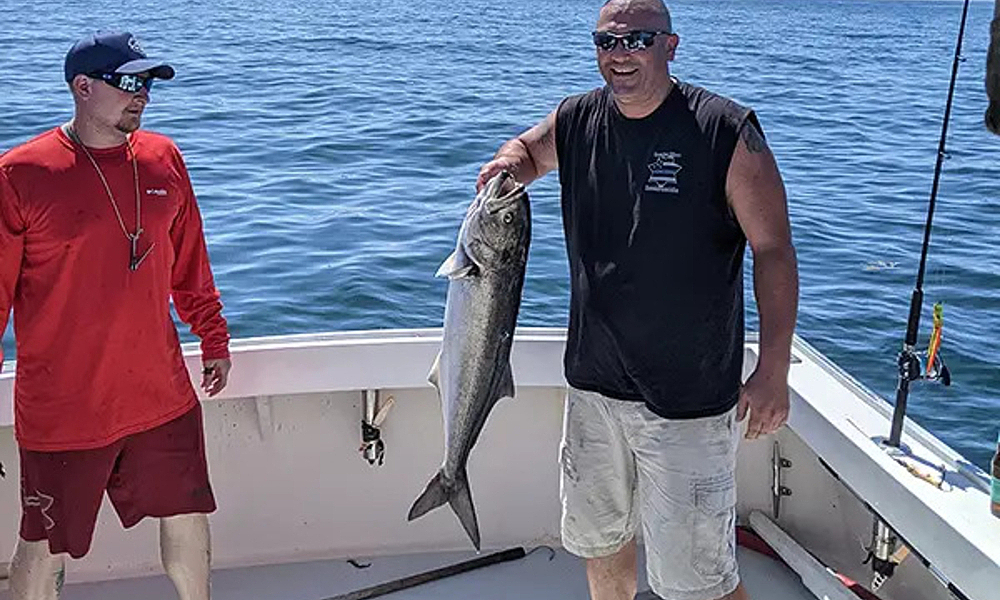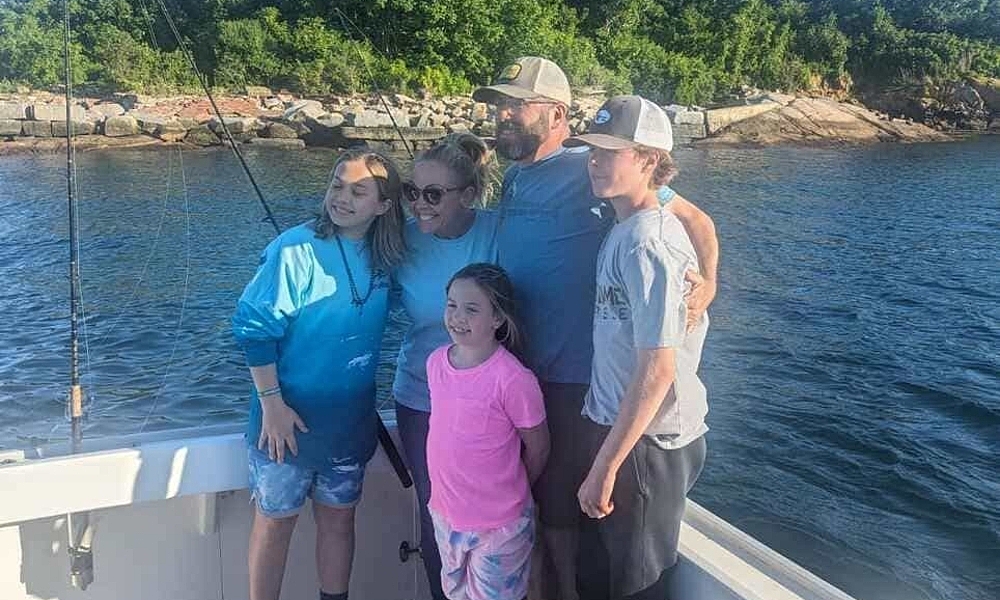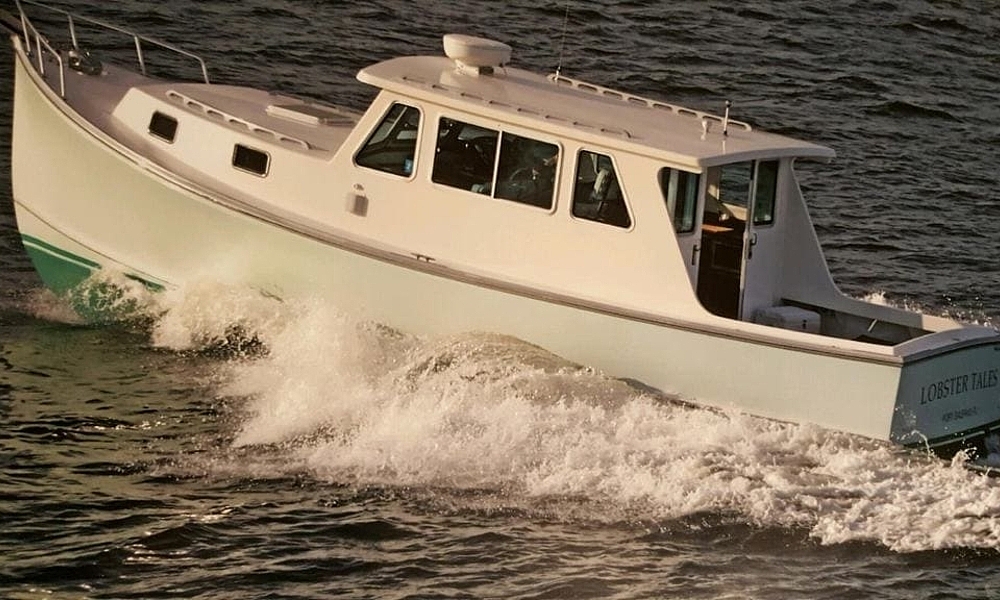Seasonal Fishing Tips for Gloucester's Most Popular Species
Gloucester, MA, is renowned for its exceptional fishing opportunities, attracting anglers eager to catch species like Haddock and Cod, Bass and Bluefish, and Giant Bluefin Tuna. Tuna Tail Charters brings you this guide to delve into the best times to fish for these species, ensuring your fishing trip is both successful and memorable. Gloucester's rich maritime history and its location on the North Atlantic make it a prime spot for fishing enthusiasts. The diverse marine ecosystem supports a wide range of fish species, making every fishing trip a unique adventure. Gloucester offers fishing experiences that cater to all skill levels, whether you're a seasoned angler or a beginner.
Understanding Gloucester's Prime Fishing Seasons
The best fishing seasons in Gloucester vary by species, with each having specific times of the year when they are more abundant and active. Knowing these periods can significantly enhance your fishing experience. Ocean currents and water temperatures, which change with the seasons, influence the migration patterns of these fish. As a result, anglers should plan their trips according to these seasonal movements to increase their chances of a successful catch. By aligning your fishing trip with these prime seasons, you not only enjoy a more fruitful experience but also get to witness the natural beauty of Gloucester's changing landscapes.
- Haddock and Cod: Best caught in the spring (March to June) and fall (September to November). These fish are particularly abundant during these months, offering anglers plenty of opportunities for a successful catch.
- Bass and Bluefish: Peak season is during the summer months, from June to August. The warmer waters of summer attract these species closer to shore, making them more accessible to anglers.
- Giant Bluefin Tuna: Late summer to fall (August to October) is the ideal time for these magnificent fish. They are known for their impressive size and strength, making them a coveted catch for sport fishermen.
Additional Information:
| Fish Species | Regulatory Considerations | Recommended Bait | Average Size |
|---|---|---|---|
| Haddock and Cod | NOAA regulates, limits on catch size and numbers | Clams, worms, jigs | Haddock: 1-3 ft, Cod: 1.5-4 ft |
| Bass and Bluefish | State regulations apply, catch and release encouraged for sustainability | Lures, live bait (eels, bunker) | Bass: 2-4 ft, Bluefish: 1-2 ft |
| Giant Bluefin Tuna | Highly regulated, special permits required | Live bait (mackerel, herring), artificial lures | 6-10 ft, can exceed 1000 lbs |
Why Timing Matters
Fishing during these optimal periods increases your chances of a successful catch due to higher fish activity and abundance. Additionally, weather conditions and water temperatures during these times are conducive to fishing for the specified species. Understanding the feeding habits and preferred habitats of these fish during different times of the year can greatly improve your fishing strategy. For instance, certain fish may move to deeper waters as temperatures rise, requiring different fishing techniques and equipment. By choosing the right time to fish, you not only enhance your chances of catching fish but also ensure a safer and more enjoyable experience on the water.
Expert Tips for Each Species
Haddock and Cod
Focus on bottom fishing techniques using jigs or baited hooks for Haddock and Cod. These species are often found near the seabed, so accurate depth control is crucial. It's also beneficial to pay attention to the type of bait used, as fresh bait can significantly increase your chances of attracting these fish. Additionally, staying aware of the seabed's topography can help you locate prime fishing spots where these species are likely to congregate.
| Technique | Bait and Lures | Seasonal and Environmental Considerations | Behavioral Insights |
|---|---|---|---|
| Bottom fishing with jigs or baited hooks | Fresh bait; glow-in-the-dark jigs | Colder water preference; Monitor weather patterns; Seasonal migrations | Slow retrieval method; Change fishing spots within habitat |
- Haddock and Cod prefer colder water temperatures, typically found in northern Atlantic regions.
- Using glow-in-the-dark jigs can be particularly effective in deep water or low light conditions where these fish reside.
- Consider the time of year, as seasonal migrations can affect their location and abundance.
- Monitoring weather patterns can also be crucial, as changes in pressure and temperature can influence their feeding behavior.
- Employing a slow retrieval method can mimic injured prey, making the bait more attractive to these species.
- Regularly changing fishing spots within a known habitat area can increase catch rates, as these fish may be scattered.
Bass and Bluefish
Surface lures and live bait work best for Bass and Bluefish, especially during early morning or late evening when these fish are most active. Experimenting with different types of lures and baits can be key to finding what works best in attracting these aggressive predators. Additionally, understanding the behavior of these species, such as their tendency to hunt in schools, can guide you in choosing the most effective fishing spots and techniques.
| Preferred Techniques | Lures and Baits | Environmental Sensitivity | Behavioral Strategies |
|---|---|---|---|
| Surface lures; Live bait | Scented baits for Bass; Fast-moving lures for Bluefish; Use wire leader for Bluefish | High sensitivity to water temperature changes | Target underwater structures for Bass; Mimic injured fish movements for Bluefish; Consider lunar cycle |
- Bass often seek shelter among underwater structures, so targeting areas with submerged logs, rocks, or vegetation can be fruitful.
- Bluefish are known for their sharp teeth, so using a wire leader can prevent them from biting through the line.
- Both species are highly sensitive to water temperature changes, which can influence their feeding patterns and location.
- For Bass, using scented baits can be particularly effective as they rely heavily on their sense of smell to locate prey.
- Bluefish are attracted to fast-moving lures, mimicking the erratic movements of injured fish.
- Understanding the lunar cycle can also play a role in fishing for these species, as their activity levels can increase during full moon phases.
Giant Bluefin Tuna
Trolling with artificial lures or chunk baiting are effective methods for Giant Bluefin Tuna. Patience and heavy-duty gear are essential due to the size and strength of these fish. It's also important to note that these tuna are highly migratory, so keeping track of their movement patterns can greatly increase your chances of a successful catch. Employing techniques like chumming can also attract these giants closer to your boat, providing an exhilarating fishing experience.
| Fishing Methods | Conservation and Sustainability | Technology and Collaboration | Prey and Lure Matching |
|---|---|---|---|
| Trolling; Chunk baiting; Chumming | Tagging and tracking for conservation; Implement catch and release with proper handling | Use sonar technology; Share information with other anglers | Match lure or bait size to typical prey |
- Tagging and tracking studies have shown that Giant Bluefin Tuna can travel across entire oceans, indicating the need for international conservation efforts.
- Due to their size, adult Bluefin Tuna have few predators, with humans being the primary threat through commercial fishing practices.
- Implementing catch and release practices with proper handling can contribute to the sustainability of this species.
- Using sonar technology can help locate schools of Bluefin Tuna, especially when they are feeding at depths.
- It's important to match the size of the lure or bait to the prey typically consumed by Bluefin Tuna in the area.
- Collaborating with other anglers to share information on sightings and catches can improve success rates for everyone involved.
Choosing the Right Gear
When it comes to fishing, selecting the right gear is crucial for a successful outing. The type of gear you choose should be based on the species of fish you're targeting, as different fish require different techniques and equipment. Factors such as the fish's habitat, size, and behavior play a significant role in determining the most effective gear and methods for catching them.
This guide provides recommendations on the ideal gear and techniques for catching various species of fish. Whether you're aiming for the bottom-dwelling Haddock and Cod, the agile Bass and Bluefish, or the formidable Giant Bluefin Tuna, the right combination of rod, reel, and technique can make all the difference. Read on to ensure you're well-equipped for your next fishing adventure.
Understanding Your Target Species
Before heading out, it's essential to have a deep understanding of the fish you're targeting. Each species has unique characteristics and preferences that influence the choice of gear and fishing techniques. For instance, the habitat of the fish—whether it's freshwater or saltwater, deep or shallow, near the shore or offshore—will dictate the type of gear needed. Additionally, the behavior of the fish, such as whether it's more likely to be found near the bottom or at the surface, can also determine the most effective fishing methods.
- Habitat: Knowing whether your target species prefers rocky bottoms, sandy flats, or deep-sea environments helps in choosing the right location and gear.
- Size: The size of the fish influences the strength of the gear required. Larger, more powerful fish will require heavier rods and stronger lines.
- Behavior: Understanding if your target species is aggressive, migratory, or tends to stay in schools can significantly impact your strategy and choice of lures or bait.
Recommended Gear and Techniques by Species
Below is a detailed breakdown of recommended gear and techniques for popular target species. This information is designed to help you make informed decisions and increase your chances of a successful catch.
| Species | Recommended Gear | Techniques |
|---|---|---|
| Haddock and Cod | Medium-heavy rods, braided lines | Bottom fishing with jigs or bait |
| Bass and Bluefish | Light to medium rods, monofilament lines | Surface lures, live bait |
| Giant Bluefin Tuna | Heavy rods, strong reels | Trolling, chunk baiting |
Additional Tips for Successful Fishing
Beyond choosing the right gear, there are several other factors to consider to ensure a successful fishing trip. Here are some additional tips:
- Weather Conditions: Fish behavior can change with the weather. Pay attention to forecasts and plan your trip accordingly.
- Water Temperature: Like weather, water temperature can significantly affect fish activity. Certain species are more active in warmer or cooler temperatures.
- Time of Day: Some fish are more active during specific times of the day. Early morning or late evening are often the best times to fish for many species.
- Local Knowledge: Don't underestimate the value of local knowledge. Talk to local fishermen or guides who can provide insights into the best spots and techniques for the area.
By taking the time to understand your target species and carefully selecting your gear and techniques, you can greatly increase your chances of a successful and enjoyable fishing adventure. Remember, fishing is not just about the catch—it's also about the experience and the connection with nature.
Conservation and Regulations
It's crucial to stay informed about the latest fishing regulations and conservation efforts in Gloucester. Adhering to size limits, catch limits, and seasonal restrictions helps ensure the sustainability of these prized species for future generations. Engaging in responsible fishing practices, such as catch and release for non-target species and minimizing environmental impact, contributes to the health of Gloucester's marine ecosystem. By respecting these guidelines, anglers play a vital role in preserving the biodiversity and abundance of fish in the area, ensuring that Gloucester remains a premier fishing destination for years to come.
Additional Information:
| Species | Minimum Size Limit | Bag Limit (per day) | Season |
|---|---|---|---|
| Atlantic Cod | 21 inches | 10 | April 15 - September 30 |
| Striped Bass | 28 inches | 1 | May 1 - December 15 |
| Bluefish | No minimum | 15 | Year-round |
| Flounder | 12 inches | 8 | May 22 - September 30 |
Why Choose Tuna Tail Charters
At Tuna Tail Charters, we offer guided fishing charters in MA tailored to your preferences and skill level. Our experienced captains know the best spots and techniques for each species, ensuring an unforgettable fishing adventure in Gloucester. With a focus on safety, conservation, and providing a top-notch fishing experience, Tuna Tail Charters is your go-to choice for exploring the rich waters of Gloucester. Whether you're looking to battle the mighty Giant Bluefin Tuna or enjoy a day of catching Haddock and Cod, our team is dedicated to making your fishing dreams a reality.
Ready to begin your fishing journey? Contact Tuna Tail Charters at 978-905-6200 or book your trip now for the ultimate fishing experience in Gloucester, MA. Our friendly staff is here to assist you with all your booking needs and answer any questions you may have about your upcoming fishing adventure. Don't miss out on the opportunity to fish in one of the most prolific waters in the Northeast – call us today!
‹ Back








